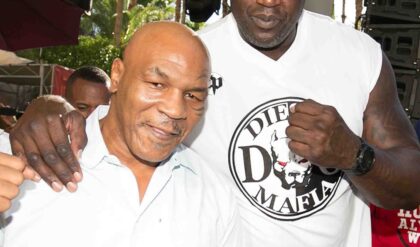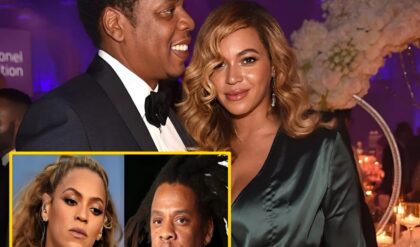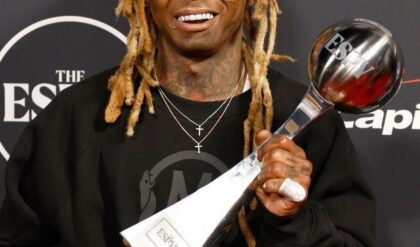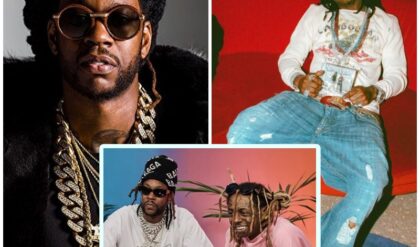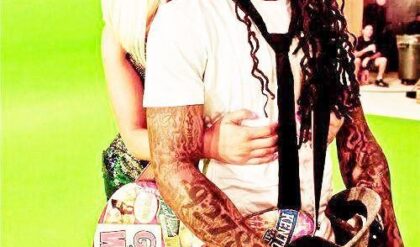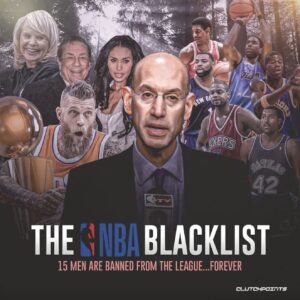
The NBA, like every sports league has its rules and regulations to follow. Relatively, the league isn’t the kind to ban players and personnel aimlessly. In fact, we’ve seen various players and coaches, despite engaging in brawls, only slapped with suspensions and hefty fines.
One example was the Malice at the Palace, where we saw the league hand out multiple suspensions after players from both squads, coaches, and fans engaged in a dramatic brawl. Nonetheless, in this post, we’re looking at banned NBA players in the league’s history. This includes only people that remain banned. For instance, Tyreke Evans was banned in 2019 for substance abuse, but he applied for reinstatement after two years, and Evans was officially reinstated in 2022.
While it’s relatively rare to see individuals getting permanently banned by the league, they do get handed out by the league from time to time. Although on-court brawls and physical altercations don’t usually merit permanent bans in the NBA, the league is intolerable to racist remarks, substance abuse, and point-shaving scandals.
Banned NBA Players
Here are the 16 players that were banned permanently by the NBA.
15-9. Players involved in the CCNY Point-Shaving Scandal
Back in the days, point-shaving was a gambling practice that was brought to light. It was a major scandal that brought dark days to college basketball. In this case, it certainly affected the basketball programs of seven major colleges. This enormous scandal would be known as the CCNY Point-Shaving Scandal.
This scandal, as in the name itself, involved the City College of New York. This was a college team that outlasted their college rivals against the likes of University of Kentucky and Bradley University. CCNY would win the National Invitational Tournament and NCAA Division I Tourney.
However, despite the grand feat, it would then be discovered that college basketball including CCNY’s glory was infiltrated by players involving with point-shaving, a heinous crime against the sport. This is an act wherein players intentionally play poorly in order to generate more income, depending on the bets placed on the point spread of the game’s outcome. To make matters worse, these college players were getting paid to commit these acts by criminal organizations on the biggest stage of college basketball. It’s worth noting that Salvatore Sollazo, who was a professional gambler and jeweler, was one of the architects of this game-fixing scandal.
Around 30 players involved in the incident would also be arrested by police authorities. Furthermore, while these acts weren’t held under the NBA, the league took the initiative to ban some college prospects who were involved from ever stepping foot in the NBA. Some of the notable players include EPBL MVP and Sporting News Player of the Year Sherman White, who was a highly touted prospect from Long Island University that could’ve easily been a first-round pick. Unfortunately, he’d face time in prison for nine months and was barred from entering the NBA.
Another notable player from this scandal was Gene Melchiorre. Melchiorre managed to reach draft night and found himself getting drafted by the Baltimore Bullets as the first overall pick of the 1951 NBA Draft. But after admitting that he was involved with the point-shaving scandal, then NBA President Maurice Podoloff. Because of this, Melchiorre never played a single minute of NBA basketball, despite being dubbed as the “greatest little man in basketball”. He became only the second first-overall pick to not see action in the league.
The other notable players involved in the CCNY scandal that was banned by the league were Ralph Beard. Alex Groza, Norm Mager, Bill Spivey, and Ed Warner.
8. Jack Molinas
Unlike the likes of Gene Melchiorre and Sherman White, Jack Molinas actually managed to play in the NBA. In fact, he wasn’t just any player. Drafted as the third overall pick in the 1953 NBA Draft, Molinas averaged 11.6 points and 7.1 rebounds per game for the Fort Wayne Pistons in his lone season in the league. He also made the All-Star team in his rookie year.
Unfortunately, Molinas was discovered to be involved in gambling by betting against his own team, thus forcing the league to permanently ban the one-time All-Star. Aside from this, it also came into light that Molinas was the central figure to the 1961 game-fixing scandals that led to the arrest of 37 players from 22 colleges. His game-fixing activities also negatively affected the careers of notable players such as Connie Hawkins and Roger Brown, with the former eventually making it to the NBA.
It won’t be long before Molinas would end up behind bars for 10 to 15 years, due to game-fixing and bribing players. And after his release, Molinas engaged in illegal activities. Unfortunately at age 43, Molinas would be murdered in a shooting at the backyard of his home. The police didn’t rule out a mob-crime, given that they suspect a connection between the shooting and the murder of Molinas’ business partner Bernard Gusoff. Gusoff was found beaten to death, in which Molinas collected $500,000 on an insurance policy.
7. Roger Brown
Speaking of Jack Molinas, a player who never set foot in the NBA was Roger Brown. Brown actually put up a solid career in the ABA. In his eight-year career, he averaged 17.4 points, 6.2 rebounds, and 3.8 dimes per game. Brown was also a four-time ABA All-Star and had his jersey retired by the Pacers.
But due to his involvement with Jack Molinas, Brown would be prevented from showcasing his wares in the NBA. Although he wasn’t accused of getting involved in any of Molinas’ point-shaving schemes, Brown admitted to accepting favors from the Pistons draft pick. Because of this, then-NBA commissioner Walter Kennedy would immediately lay down the hammer to ban Roger Brown alongside Connie Hawkins.
Fortunately for Brown, he still found a way back to basketball. Although it isn’t in the NBA, he became the first player to ever be signed by the Indiana Pacers. Back then, the Pacers would still be in the American Basketball Association. And given that the Naismith Memorial Basketball Hall-of-Fame doesn’t only include NBA players, Brown did wonders for the Pacers to merit him a place in the prestigious hall of basketball legends.
6. John Drew
Aside from game-fixing, another activity that could get you banned from the NBA is substance abuse. One of the players that felt the receiving end of the ban was John Drew. Drew was a talented player, who made his presence felt in the league. He averaged 20.7 points, 6.9 rebounds, and 1.7 assists per game in 11 seasons. In his career he had productive stints with the Atlanta Hawks and the Utah Jazz. Drew was also selected to participate in the All-Star Game twice.
Although he had the talent, he stopped playing in the league by the time he reached 31 years old due to substance abuse. Drew was reportedly addicted to cocaine, and his addiction started during the 1977-1978 season. And for the two-time All-Star, it was a vice that he couldn’t let go.
In an interview, Drew was quoted saying “I tried something, and liked it. And by liking it, it almost destroyed me.”
It was in January 1986 when the NBA started to take action. The league banned Drew, after he was admitted to a hospital in Salt Lake City, given that it was his third time to be admitted due to drug abuse. Drew’s last season in the NBA also saw him register the worst drop-off in his career. He only averaged 16.2 points, while shooting a career-low 41.2 percent from the field overall.
Drew passed away April 10, 2022, in Houston. He had been driving a taxi for a number of years but was suffering from bone cancer.
5. Chris Washburn
Aside from John Drew, another player who suffered the same fate was Chris Washburn. Drafted as the third overall pick by the Golden State Warriors in the 1986 NBA Draft, Washburn was one of those highly touted prospects that just didn’t pan out in the NBA.
In NC State, Washburn pieced together a solid college career. He averaged 16.4 points and 6.6 rebounds per game in two years. However, his NBA numbers showed otherwise. Washburn’s NBA career was uneventful, as he only averaged 3.1 points and 2.4 rebounds per game. And after two seasons, the NBA barred him from setting foot into the league ever again due to substance abuse.
Unfortunately, his addiction to drugs didn’t only affect his NBA career, but also his personal life. Washburn found himself making 14 trips to the drug rehabilitation center. Aside from this, the former Warriors center struggled financially.
In an interview, Washburn said “I had the money but the only person I was paying was my crack dealer and I was making him rich. I ate out of trash cans. I panhandled. I went into stores, and I boosted. I lived that way for about two years.”
However, Washburn emphasizes that the lowest point of his life was when he couldn’t even start for his basketball team in prison.
Washburn said in a podcast, “My lowest came when I was in prison. They asked me to play on the prison basketball team. I left the NBA where the hardwood floors are polished. I could look up the stands and see thousands of people looking good. Now I’m on a prison bench. The guy beside me has on army boots. Another guy has flip flops taped to his feet. We’re playing on concrete. I also have six cheerleaders that are men. I wasn’t even starting in the damn penitentiary. I was coming off the bench.”
Fortunately, Washburn claims he has given up his drug addiction for quite some time now. He currently is a motivational speaker to help NBA rookies avoid his own mistakes.
And for the icing on the cake, the elder Washburn is seeing his son, Julian Washburn, playing professional basketball in the British Basketball League as recently as the 2021-22 season. The younger Washburn also saw action for the Memphis Grizzlies during the 2018-19 season.
4. Roy Tarpley
Drafted as the seventh overall pick in the 1986 NBA Draft by the Dallas Mavericks, Roy Tarpley had the tools to carve out a solid career in the NBA. His first few years were fairly decent. Tarpley made the All-Rookie team in his first year. Furthermore, he had an outstanding sophomore year that saw him take home the Sixth Man of the Year Award.
Unfortunately, Tarpley couldn’t extend his NBA career further. The 6-foot-11 big man fell into cocaine and alcohol addiction. Tarpley would take his talents to Europe after being barred by the NBA. The former Mavericks center actually made his mark in Europe and made a case to make a comeback into the NBA. Tarpley would be a top scorer and would help his team win the Greek League Championship. In the Euroleague, he averaged 20.9 points, and 12.9 rebounds per outing.
Although the league would reinstate him, which allowed him to make a brief return to the Mavericks, Tarpley continued on with his alcohol abuse, which prompted the league to permanently ban him in 1995. In six seasons with the Mavericks, Tarpley averaged 12.6 points and 8.2 boards per game.
However by 2015, Tarpley would no longer be with us. At a young age of 50 years old, the former Mavs big man passed away at the Texas Health Arlington Memorial Hospital. Roy Tarpley was no doubt a big what-if, had he stayed fit and healthy.
According to Brad Davis, who was the former teammate of Tarpley, said “If Roy had stayed healthy, he could have been one of the top 50 players ever. He could do it all – shoot, score, rebound, defend. We are all sorry to hear of his passing.”
3. Richard Dumas
Like Roy Tarpley, Richard Dumas is also a big what-if. Although he isn’t a first-rounder that is a highly touted prospect, Dumas had the tools to have a lengthy NBA career. But despite the multiple chances the NBA gave him, Dumas just couldn’t let go of his drug addiction.
To be fair, Dumas suffered a condition. In fact, he claims that he was diagnosed with manic bipolar disorder with social anxiety disorder. This made him anxious of the jam-packed crowds in the arena alongside the game’s bright lights. In fact, Dumas claims he had to drink six packs of beer before the game to calm himself down. Unfortunately, aside from drinking beer, he was also addicted to drugs. According to Dumas, he claims that he has been engaging with drugs ever since he was 13 years old.
In terms of his NBA career, Dumas sat out his supposed rookie year as he violated the NBA’s substance abuse policy. While serving his suspension, Dumas played in Israel. A season later, Dumas didn’t disappoint. He averaged 15.8 points and 4.6 rebounds per game as the Suns’ reserve forward to merit a place in the All-Rookie Second Team. But more importantly, Dumas would be part of the Suns team that reached the NBA Finals in 1993.
While the Suns failed to win the championship against a Michael Jordan led Chicago Bulls, that successfully captured the elusive three-peat, Dumas would spiral down from there. After a historic run at the Finals, Dumas would fail another drug test which eventually forced the Suns to waive him.
He did get an opportunity with the Sixers. John Lucas, who was Head Coach of the Sixers, endorsed Dumas. Although he played 39 games, Dumas was hardly productive. He only averaged 6.2 points per game for the Sixers in his last season in the league. Dumas opted to play overseas after the league subsequently banned him for failing to cooperate for his rehabilitation.
After Dumas played overseas, he took on odd jobs. But worse Dumas would be arrested on multiple occasions. The biggest one being an arrest due to theft at a retail store. Dumas fell into trouble after he was caught stealing $800 worth of merchandise from the Luke Air Force Base’s exchange store.
·
Fortunately, Dumas’ personal life has been much better since then. After getting into the Serious Mental Illness program, his mental illnesses are getting treated.
According to AZ Central, Dumas said “Maybe if I knew this stuff, I wouldn’t have needed a six-pack before the game. Maybe I would’ve been in the NBA and made millions like everybody talks about.”
While it’s unfortunate to see his NBA career flame out due to substance abuse, it’s reassuring to see Dumas try to walk the straight path by having himself treated. This is surely a huge step forward for his life that’s way bigger than basketball. In January 2023, Dumas even was able to attend the 30-year reunion of the Suns team that made the NBA Finals.
2. O.J. Mayo
In a more recent banning, one of the players that was notably banned is O.J. Mayo. As we all know, Mayo was considered to be one of the most highly touted prospects entering into the NBA. He was drafted as the third overall pick in the 2008 NBA Draft by the Minnesota Timberwolves.
Mayo’s first few years in the league was spectacular. In four seasons with the Grizzlies, he averaged 15.2 points per game, while shooting 37.5 percent from downtown. In his fifth season in the league, Mayo showed some promise with the Mavericks. He averaged 15.3 points per game, while shooting 40.7 percent from deep, as the team’s starting guard. Mayo would go on to sign with the Bucks for his last three years in the league, putting up 10.6 points per game off the bench.
It was expected that Mayo would test free agency after his stint with the Bucks. However, disaster struck the USC standout. The league announced that Mayo violated its antidrug policy, and much like Evans, he had the option to apply for reinstatement after two years. While the league never really specified how Mayo violated the antidrug policy, it’s safe to assume he tested positive for abusive drugs.
Mayo has been out of the league ever since the 2015-2016 season. Fortunately, however, Mayo still has playing basketball as his career after taking his talents overseas. He has showcased his wares in Taiwan, China, Puerto Rico and Russia. Most recently, he played the 2022-23 season for Zamalek SC of the Egyptian Basketball Super League.
Now at 35 years old, Mayo can still attempt to make a comeback. However, it seems unlikely given that his current age and past record of major injuries aren’t in his favor.
1. Donald Sterling
Out of all the people banned by the NBA, there’s only one non-player in this list. That person is former Clippers owner Donald Sterling. In 2014, a recording of Sterling’s conversation with his mistress V. Stiviano containing racist remarks was released into the public. Furthermore, Sterling has had a record of racist behavior towards people of color, including his players.
After the tape went public, Clippers players threatened to boycott games which Head Coach Doc Rivers supported. Furthermore, the public immediately condemned Sterling for his racist remarks.
Given the public clamor and the NBA’s strong stance against racism, newly appointed commissioner Adam Silver banned Sterling for life. On top of the ban, Sterling was also penalized with a hefty fine of $2.5 million.
The ownership of the Clippers’ franchise eventually went to Sterling’s wife, Shelly. Shelly would then sell it to Steve Ballmer for $2 billion.
Sterling is arguably the worst owner when it comes to sports teams. Under his ownership, the Clippers never really progressed. In a span of 32 years, the Clippers only garnered two winning seasons. Furthermore, the Clippers were even named as the worst sports team by ESPN. But regardless of whether he was a bad owner or not, his racist behavior had no place in any sports league. Nonetheless, were you at all surprised by the banned NBA players?
